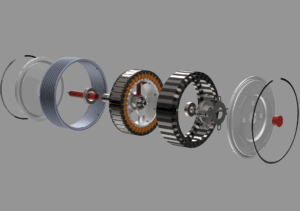
- Kim Kisner
- Business
- 11/11/2025
A Q&A with Modal Motors
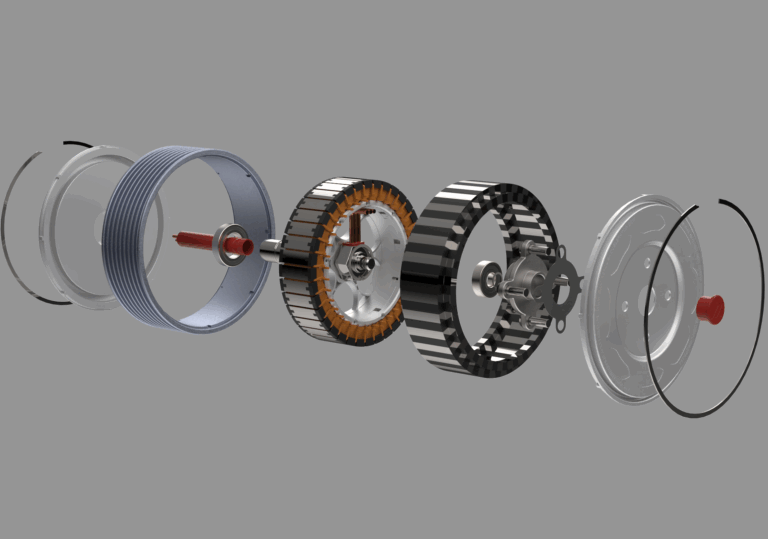
Farmington Hills-based Modal Motors designs and manufactures next-generation electric motors engineered for high torque density, simplified assembly, and scalability in the United States. The company’s transverse-flux architecture reduces reliance on rare-earth materials while improving efficiency and performance across mobility applications, including EVs, drones, and industrial equipment. By rethinking both motor design and manufacturability, Modal Motors aims to strengthen domestic supply chains and support the growing electrification industry.
The company recently raise $2 million in a seed funding round that it will use to accelerate its transition from R&D and prototyping to full-scale manufacturing in Michigan.

SBN Detroit interviewed company founder and CEO Michael Steenburg about reshoring manufacturing, supporting Michigan’s EV leadership, and the future of electric propulsion.
Q: Give us the brief origin story. What motivated the creation of Modal Motors?
A: Over the last 25 years, American manufacturing has moved steadily overseas. As electrification has accelerated, we’ve seen a slow-moving shift where innovation happens here, but production doesn’t.
Early in my career, I focused on improving fuel efficiency in vehicles. That eventually led to developing my own motor IP. When I looked at the manufacturing reality, it was clear: If we wanted the U.S. to truly compete in electrified mobility, we needed to rethink how motors are built.
Instead of designing motors that require extremely labor-intensive processes and then shipping production to Asia to reduce costs, we asked: What if we design motors that are simpler and more affordable to build here in the U.S. from the start?
Modal Motors is about empowering a domestic ecosystem — not just for cars, but also for tools, industrial equipment, and new sectors like drones. We want to help restore middle-skill manufacturing jobs and global competitiveness.
Q: As the EV transition accelerates, what strengths can Michigan leverage in next-generation motor technology?
A: Michigan is uniquely positioned to lead in electric motors.
We already have the materials: Magnets, copper, aluminum, and magnetic steel — all core materials for electric machines. We have the fabrication capabilities and the workforce tuned to advanced manufacturing.
The state has done this before. During WWII, Michigan transformed its industrial capacity seemingly overnight.
When you combine supply chain + skilled labor + materials, Michigan can support EVs from raw resource to finished motor.
Q: Your motors use a transverse-flux architecture. What limitations of conventional motors drove that change?
A: Traditional motors are built from dozens of wound poles — for example, 36 windings, each requiring extremely precise tolerances. In EV motors, the most important factor is the air gap between rotor and stator. Every tolerance stack-up tightens that gap, making efficiency dependent on expensive precision manufacturing.
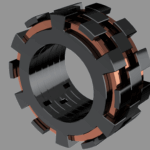
That’s where the U.S. loses cost competitiveness. Either you buy extremely complex machinery or you rely heavily on manual labor, and both increase cost.
We simplified the architecture. Our drone motors have about 10 components. Fewer parts means faster assembly, fewer labor hours, and lower costs — while allowing us to pack in more conductive material like copper, which directly boosts efficiency. We also design for improved heat removal, which is critical because permanent magnets degrade if they overheat.
It’s not magic. It’s applying well-understood engineering principles to reshape manufacturability.
Q How does torque density influence vehicle performance and design flexibility?
A: Higher torque density means more power in a smaller package. That gives automakers more freedom — lighter powertrains, more cabin space, and better range due to reduced mass.
It also lets us rethink where motors go. You can decentralize propulsion — wheel motors are a great example — and that opens new possibilities for efficiency and architecture.
Q: What role do motor efficiencies play in lifecycle sustainability?
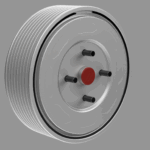
A: Once an EV is in use, there are no tailpipe emissions. Lifecycle emissions are determined by everything leading up to that point — and the more efficient the motor, the faster you reach carbon parity with internal combustion.
The energy pathway matters too. Electricity can be generated cleanly and used directly in propulsion with relatively little loss. That’s fundamentally different from extracting, refining, transporting, and burning fuel.
And increasingly, people are powering their vehicles at home with solar — something impossible with fossil fuels.
Q: What makes a motor truly “greener” end-to-end?
A: Cradle to grave matters. How materials are mined. How they’re processed. How much waste is generated.
We design for net-shape molding, which means essentially zero scrap — compared to stamped laminations where 40–60% of material can become waste. Even if metal is recycled, that still requires energy.
Eliminating waste helps both sustainability and cost, which reinforces competitiveness for U.S. manufacturers.
Q: Where do you see your earliest applications?
A: Right now, off-highway vehicles, low-speed on-road vehicles, and especially drones.
We’ve seen enormous demand in aerospace and defense because propulsion reliability and supply-chain security are strategic priorities. Drones were the first to fully embrace emerging motor architectures.
Q: How open are OEMs to integrating new propulsion architectures?
A: It varies. Drone manufacturers are agile — they don’t have decades of legacy powertrain design to work around.
Automakers are more cautious, but they’re increasingly interested in wheel-motor architectures because removing the centralized drivetrain frees up vehicle space and simplifies mechanical systems.
There’s also a generational shift. Younger buyers are embracing smaller, more efficient vehicles. That shift aligns well with distributed propulsion.
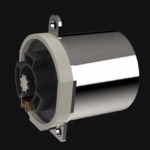
Q: What breakthroughs do you expect next in electric motor development?
A: I see two major drivers.
First, new materials. AI-accelerated materials science will unlock stronger, cooler-running, more recyclable magnetic and structural alloys — including non-rare-earth alternatives.
Second is new manufacturing automation. Robotics — including humanoid robots — will soon handle complex manual steps at high speed and precision, enabling U.S. factories to operate 24/7.
When you combine those, motor technology and production are both heading toward dramatic gains in efficiency and sustainability.
Be sure to subscribe to our newsletter for regular updates on sustainable business practices in and around Detroit.
Kim Kisner
- All
- Business
- Community
- Education
- Events

Farmington Hills-based Modal Motors designs and manufactures next-generation electric motors engineered for high torque density, simplified assembly, and scalability in the United States. The company’s transverse-flux architecture reduces reliance on rare-earth materials while improving efficiency and performance across mobility applications, including EVs, drones, and industrial equipment. By rethinking both motor design and manufacturability, Modal Motors aims to strengthen domestic supply chains and support the growing electrification industry. The...
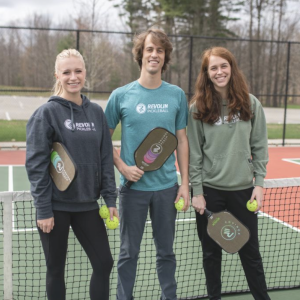
Revolin Sports, a Holland, Michigan-based startup founded by siblings Hugh and Greta Davis, is aiming to change how sports equipment is made — starting with the fastest-growing sport in America: pickleball. The company is using renewable materials, energy-efficient manufacturing, and recyclable design to lower the environmental footprint of high-performance paddles. SBN Detroit interviewed Hugh Davis, cofounder of Revolin Sports, about how sustainable materials, circular manufacturing, and local partnerships...

Ann Arbor-based NSF is a 501(c)(3) nonprofit that develops public health standards and provides auditing, certification, and training across industries ranging from food and water to consumer products and manufacturing. Its work often intersects with sustainability, helping businesses measure environmental performance and verify progress toward their goals. SBN Detroit interviewed Justin Brown, senior manager of sustainability & product verification at NSF, about the challenges companies face in advancing...







